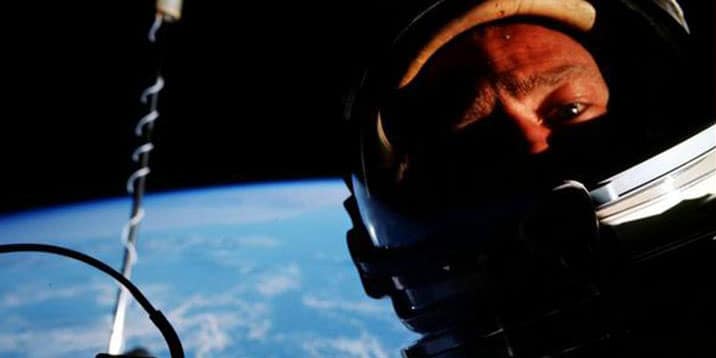The Danger of Selfie Distraction

Astronauts and pilots have long felt the desire to document their adventures in the skies, and modern technology has made this an even simpler task. But much like texting and driving, the distraction of a handheld device can prove dangerous. In 1966, astronaut Buzz Aldrin stepped out of the Gemini 12 for a routine spacewalk. But first, he took a selfie.
Astronauts and pilots have long felt the desire to document their adventures in the skies, and modern technology has made this an even simpler task. But much like texting and driving, the distraction of a handheld device can prove dangerous.
Last May, Amritpal Singh, 29, was taking friends on brief nighttime flights in his two-seat Cessna 150 above Colorado.
It was just after midnight when he and a passenger were killed when the aircraft crashed just three minutes after takeoff.
According to the National Transportation Safety Board’s investigation, Singh had a GoPro camera mounted in the cockpit and a cell phone with him.
The report said the GoPro, which was recovered intact, “revealed that the pilot and various passengers were taking self-photographs with their cell phones and, during the night flight, using the camera’s flash function during the takeoff roll, initial climb and flight in the traffic pattern.”
Katherine Moran, an associate professor in the College of Aeronautics at Embry-Riddle Aeronautical University – Worldwide, said both distraction and the flash were likely key factors in the crash.
“To keep it simple, our eyes adapt to varying light conditions but sudden changes can cause temporary lapses of visual acuity,” Moran said. “Liken this to watching an afternoon matinee and walking directly from the dark theater to the bright afternoon sun. Your eyes will eventually adapt to the brightness. Try walking back into the theater, and it will take a minute or so for your eyes to once again adapt to the darkness.”
Moran explained that the retina is made up of two photoreceptors and a chemical found in one — rhodopsin — is key in night vision. When exposed to a camera’s flash in an otherwise dark environment, the chemical essentially washes out and the eyes may take a minute or so to adapt to night vision. This reaction can create a very difficult scenario if it occurs in flight.
Moran also suggested that Singh may have been very tired.
“Humans have two ‘circadian troughs’ when performance dips,” she said, adding that they usually occur around 2 to 3 a.m. and 2 to 3 p.m. but can vary depending on a person’s routine. “The troughs are why many people head to the coffee or candy machine in the afternoon. Performing any activity – especially a technical operation or one that requires focus and attention to detail – when the body is usually sleeping is a significant stressor and can result in poor judgment, delayed motor skills, etc. So fatigue and circadian disruption could have been contributing factors to this crash.”
Just a month before the fatal crash, the Federal Aviation Administration revisited its “sterile cockpit” regulations to add a ban against the use of personal electronic devices (PEDs) by all commercial airline pilots during flight. That prohibition does not apply to general aviation pilots, who often need to use tablets or cell phones with navigation software or apps, weather forecasts and flight planning.
Steve Hedges, a spokesman for the Aircraft Owners and Pilots Association, told The New York Times that “It is of course the (private) pilot’s primary and sole obligation to remain attentive to the flight.”
And while it is not certain how this problem can be curtailed, the NTSB is certainly aware of the issue. One of the agency’s 2014 reports concluded that whether using a PED to take selfies while driving or flying, “… operator distraction due to PED usage is a cultural epidemic that too often has tragic consequences.”
